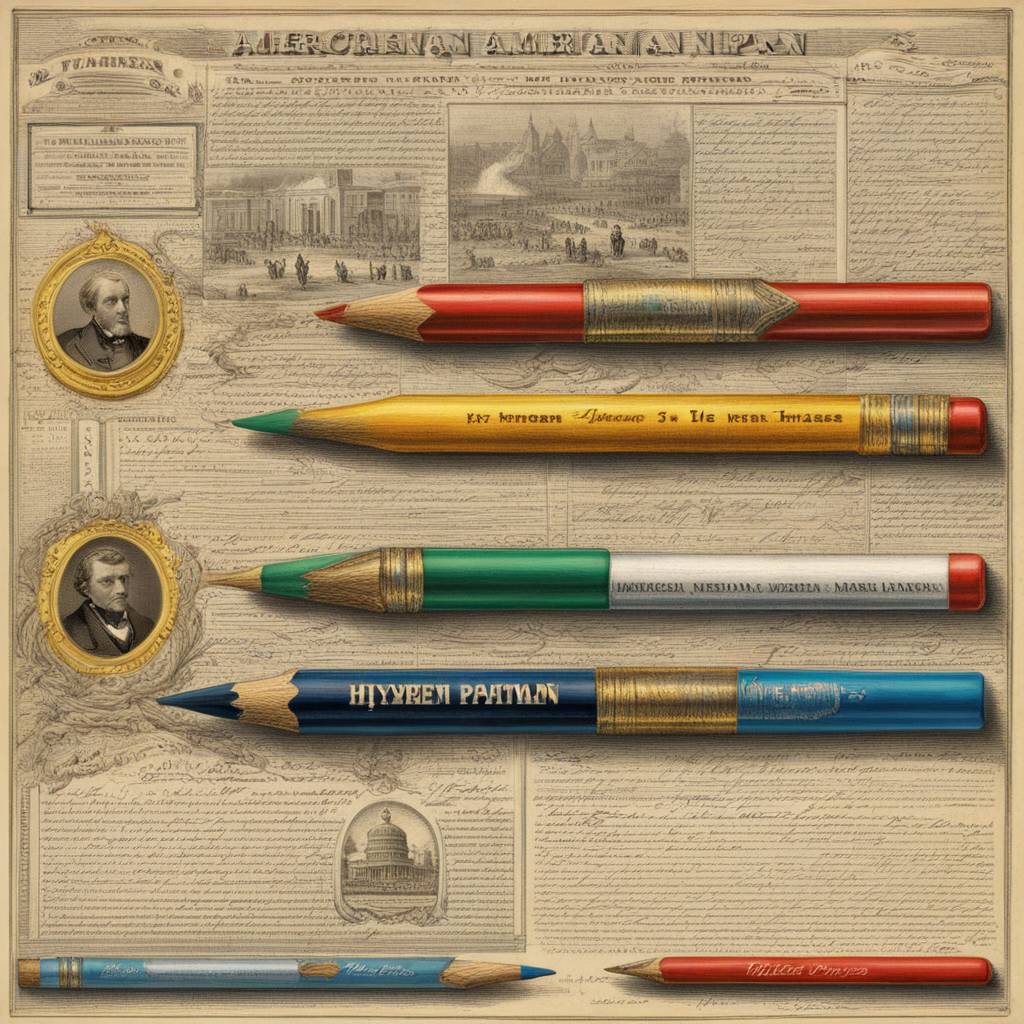On March 30, 1858, Hymen L. Lipman, a Philadelphia inventor, secured a patent for the pencil with an eraser, revolutionizing the way people corrected mistakes in their writing and drawing. Lipman’s invention allowed for the eraser to be attached to the end of a pencil, making it easily accessible and not subject to being soiled or misplaced. Born in Jamaica in 1817, Lipman immigrated to the United States and also invented America’s first envelope with adhesive, as well as a method for binding papers and producing blank postcards. His pencil with eraser marked a significant contribution to pencilcraft, enhancing the functionality and convenience of writing instruments.
The history of pencils dates back to antiquity, with the earliest stylus made from lead used by the Egyptian and Roman Empires. Pencils gained popularity in the 16th century with the discovery of graphite deposits in northern England, which were found to be non-toxic and suitable for writing. The first mass-produced pencils were made in Nuremberg, Germany in 1662, and an active pencil industry developed during the 19th century industrial revolution. American cabinet-maker William Monroe is credited with making America’s first wood pencils in 1812, and famous figures like Henry David Thoreau, Leonardo da Vinci, Benjamin Franklin, and Meriwether Lewis were known for their interest in pencils.
Despite the usefulness of Lipman’s invention, the pencil with eraser did not initially sell well. However, the start of the Civil War in 1861 created a surging demand for pencils, leading to increased success for Lipman’s product. Entrepreneur Joseph Reckendorfer recognized the potential of the pencil with eraser and bought the patent rights from Lipman for a substantial sum in 1862. As a result, Lipman became a wealthy man from the success of his invention during the war. The inclusion of an eraser on pencils became a standard feature in the industry, enhancing the functionality and practicality of writing and drawing tools.
The invention of the pencil with eraser by Hymen L. Lipman marked a significant advancement in the history of writing instruments, offering users the convenience of easily correcting mistakes without the need for separate erasers. Lipman’s innovation, combined with his entrepreneurial spirit in developing other useful products such as adhesive envelopes and blank postcards, showcased his ingenuity in improving everyday items. The popularity of pencils grew significantly throughout history, with prominent figures like Thoreau, da Vinci, Franklin, and Lewis all known for their appreciation of writing instruments. Lipman’s contribution to pencilcraft remains a lasting legacy in the world of stationery and office supplies, demonstrating the impact of innovative thinking on everyday objects.
The development of the pencil with eraser revolutionized the way people wrote and drew, providing a simple and efficient solution for correcting errors. Lipman’s patent for the pencil with eraser paved the way for advancements in writing instruments and set a new standard for functionality and convenience. The history of pencils, from the ancient stylus made with lead to the mass production of pencils in the 19th century, reflects the evolution of writing tools over time. Lipman’s successful invention during the Civil War era exemplifies the impact of external events on the market demand for new products, leading to financial success for the inventor and widespread adoption of his innovative creation. The influence of Lipman’s pencil with eraser continues to be felt in the modern stationery industry, highlighting the enduring legacy of his inventive spirit and entrepreneurial vision.
Overall, Hymen L. Lipman’s invention of the pencil with eraser on March 30, 1858, represents a significant milestone in the history of writing instruments, providing a practical and efficient solution for correcting mistakes. Lipman’s entrepreneurial achievements in developing other useful products, combined with his innovative thinking in reimagining everyday objects, underscore his lasting impact on the stationery industry. The evolution of pencils from ancient writing tools to modern-day instruments reflects advancements in technology and materials, with Lipman’s contribution standing out as a key innovation in the development of writing instruments. The widespread adoption of the pencil with eraser and its integration into everyday use demonstrate the enduring legacy of Lipman’s inventive spirit and entrepreneurial success in improving the functionality of common items.


